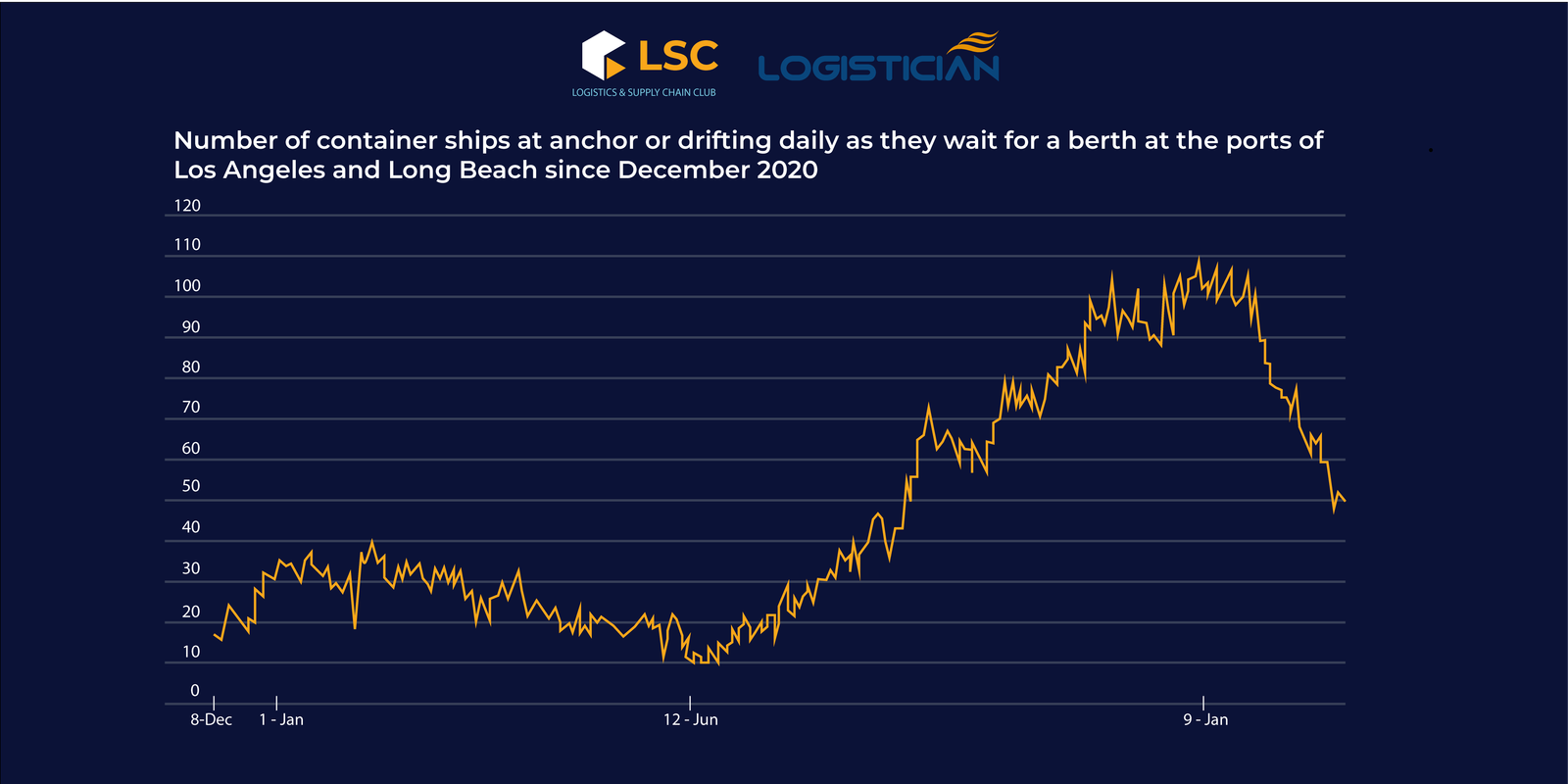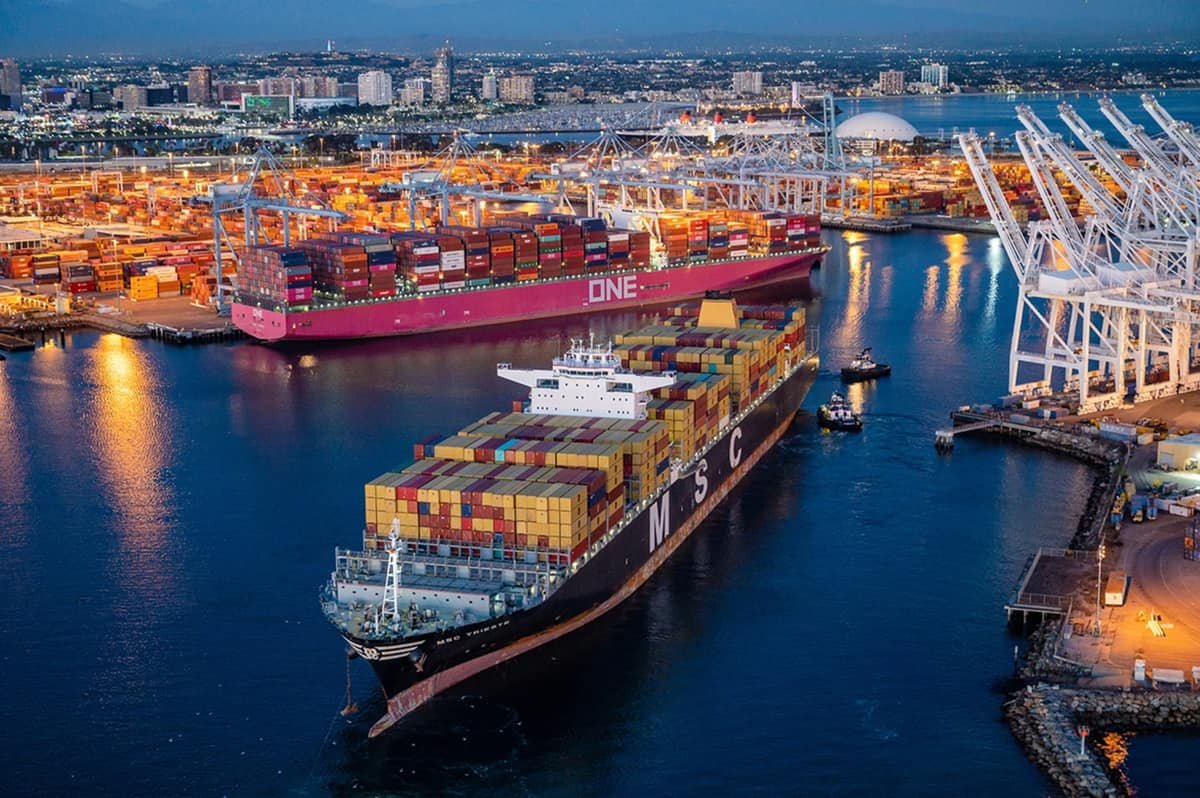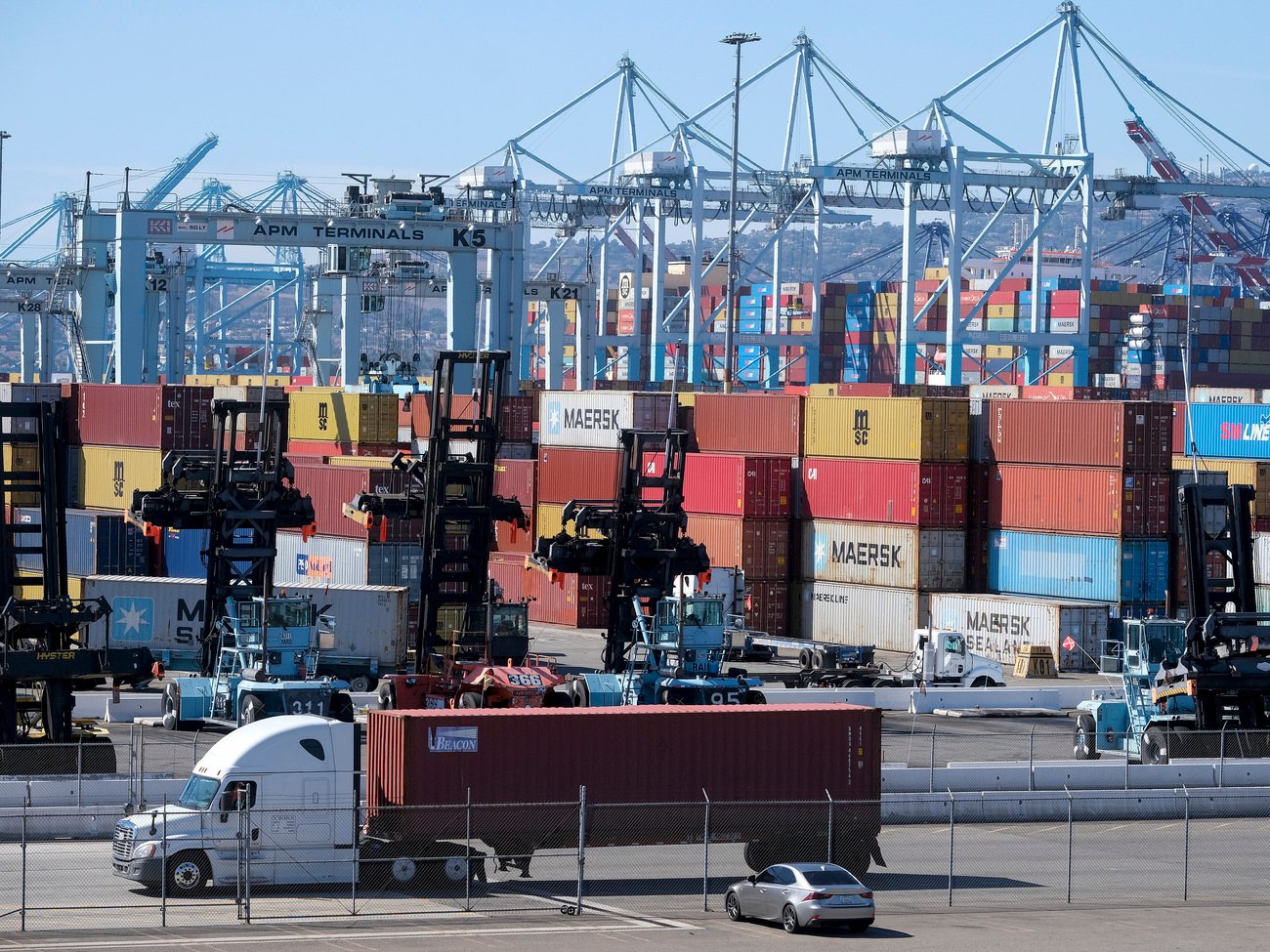A series of container ships waiting to dock in the US
A study has shown that the average transit time from Asian ports to North America has doubled since the start of the pandemic.
According to CNBC, as of February 4, 2022, more than 44,000 imported containers were waiting at the terminals at the Port of Los Angeles. In which, 66.2% of containers waited less than 4 days, 14.6% waited 5-8 days and the rest had to wait 9 days or more. Whereas before the pandemic, the average processing time for domestic delivery was less than 4 days.

Strong increase in import demand – The source of congestion
Since the summer of 2020, US consumer demand has been on the rise. Imports, including furniture, parts, cars, and clothing rose to a record 5.5 million TEU in 2021, up 13% from the previous high in 2018. The sharp increase created a significant impact on the handling of goods at the port.

To overcome a record backlog of imports, the United States has had to open its West Coast ports 24/7 since the beginning of October 2021. Along with that, the ILWU Union – representing warehouse workers at West Coast ports in the US, Hawaii, and British Columbia in Canada – also announced that ILWU members are ready to work overtime to help solve this problem.
Lack of space for warehouses – The key problem
If there is a conclusion about the cause of the US port congestion in recent years, the area for port warehouses is the key issue.
During the decade before the pandemic, excess capacity left carriers in a weak position in negotiations. They must accept requests to increase the time to use the space to place free containers (also known as free time) at the yards, in some cases exceeding 20 days from the shippers. Taking advantage of this, many retailers import products a few months in advance of the sale and store them at the port instead of sending them to their warehouses. As a result, when the crates pile up on the dock, there is no room to load more containers, the ships have to stay at the wharf longer and the ships that arrive later have to wait offshore.

However, prolonged congestion on both the East and West coasts of the United States forced port authorities to act. Since October 25, 2021, the Port of Los Angeles and the Port of Long Beach have implemented a “container dwell fee” to punish containers that stay too long on the wharf. Accordingly, each imported container staying for 9 days or more at the wharf will be charged $100 per container, and increased by $100 per day until leaving the berth. As a result, the 2 ports in San Pedro Bay have seen an aggregate drop of 64% in second-hand cargo at the berths since the program was announced. Currently, this fee remains in effect until April 22, 2022, and will be reviewed on whether to continue charging or not.
In addition, a solution being applied to expand the current warehouse area is a temporary container yard (pop-up container yard). Accordingly, previously built locations and locations for other purposes have been utilized to become temporary warehouses and inland ports, where customers can take or hold containers for transportation. Since last November, the Port of Savannah has announced plans to turn five domestic facilities into pop-up container yards. Earlier this year, the Port of Long Beach transformed the 65-acre site into a dump capable of handling 750,000 TEUs with an annual throughput. Not only ports, but Walmart also opened its pop-up container yard at ports in San Pedro Bay in November 2021. This solution is helping to significantly improve the flow of containers, reducing the burden on current official ports.
Handling capacity does not meet expectations – Painful problem
A study by management consulting firm McKinsey found that a successful automated port can increase productivity by 35% and reduce operating costs by up to 55%. Compared to comparable ports in Europe, ports in the United States are generally much less efficient. And the most important reason is the lack of automation.
This is because labor unions on both the East and West coasts are strongly opposed to increased automation, fearing it could rob them of their jobs. In 2021, ILWU, a labor union representing harbor workers on the US West Coast, Hawaii, and British Columbia, Canada, warned shipping lines and auto-ship developers that workers would not work when there is no crew on board.

The Employers Association and ILWU must work together to ensure that by upskilling workers if this automation continues to evolve, workers will not be left behind. However, it is not until July or August of this year that negotiations on a new labor contract between the two sides will have results.
What is the way out of this protracted blockage?
According to the latest data from gate optimization platform Los Angeles Signals, the average wait time at LA stations has dropped to 3.1 days, while halving the number of trains waiting in line. less than 50 ships/day.
Measures applied at present at ports are effective. At the same time, supply chain disruptions in China have also contributed to easing congestion at ports.

However, this sign of recovery may not last long. Shipping industry officials say many retailers still need to replenish inventories that have been depleted during the pandemic, and some importers such as automakers are ordering more items than usual as Priorities shift from “just in time” to “precautionary” supply chains.
The port of Shanghai will also soon recover. And when all the ships rush out of China and into LA, what faced 12 months ago will be even worse.
On top of that, disruptions could happen in July or August at US West Coast ports as unions and employers negotiate new contracts. A labor shortage in the context of having to handle a huge amount of cargo will increase pressure on current seaports.
Expanding berths, moving to less congested ports, and investing in automation are probably the most viable solutions that ports can now adopt. However, in the context of the world’s economic-political situation becoming more and more complicated, it is difficult to give an exact solution to end the serious congestion in the United States for many months.
Thanh Ha
US: West coast gateway ports link with inland ports in an effort to ease congestion













